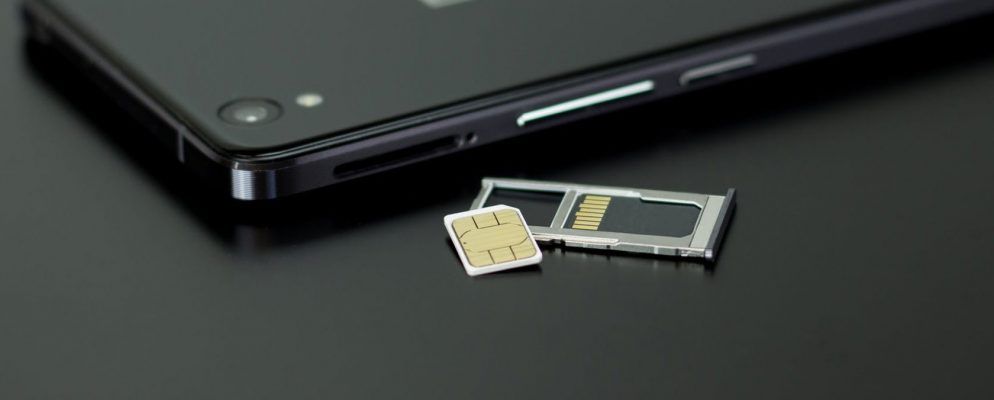If you’re eyeing a new iPhone 11, or hoping to pick up a Pixel 4, you might find they have a feature you don’t know much about: the eSIM.
An eSIM is a smaller, built-in version of the traditional SIM card, and it’s coming to a phone or other smart device near you soon. But how does it work and is it worth having? Let’s take a look.
What Is an eSIM?
An eSIM is an embedded SIM card. It’s a replacement for the physical SIM card that currently connects phones to a mobile network, but the eSIM is a lot smaller.
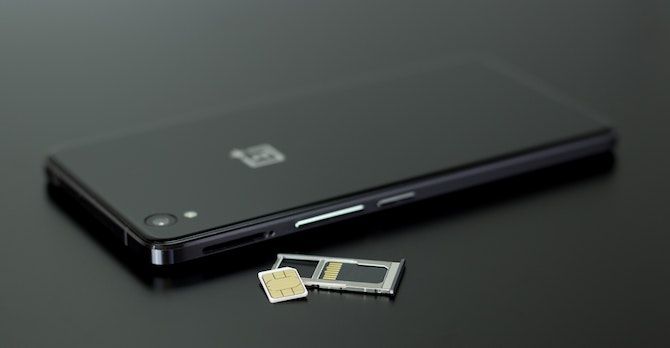
Unlike a SIM card, the eSIM is fixed onto the phone’s (or other device’s) motherboard. You don’t need to insert it, and you can’t remove it. That doesn’t mean you can’t switch numbers or change carriers, though, since the information on the eSIM is rewritable.
In fact, switching or setting it up might even be easier. You don’t have to wait for a new SIM to be delivered to your house; it could all happen instantly with just a quick phone call.
eSIM cards use the same tech, and run on the same GSM networks that normal SIMs use. Take a look at our article What is a SIM Card?
What Is a SIM Card and What Does It Do?
What Is a SIM Card and What Does It Do?
What is a SIM card and why is it so important? It connects you to your carrier network, stores contact information, and more.
Read More
for more on this.
To use an eSIM you’ll need to be with a carrier that offers it, and have a compatible phone. Carriers like AT&T and T-Mobile in the US, or EE in the UK, along with over 85 more worldwide offer eSIM support.
eSIM cards are currently used to bring dual SIM capability to smartphones including the iPhone 11 range, and the Pixel 3, as well as in smaller devices like the Apple Watch.
In time it’s likely that all phones and tablets will switch to using eSIM. Its much smaller size means that it could also become a common feature in internet-of-Things devices, although there’s an even newer and vastly smaller tech called iSIM just around the corner.
How to Set Up an eSIM Card
You connect most phones to a network by inserting the SIM card into the tray. But if it doesn’t use cards, how do you connect an eSIM phone?
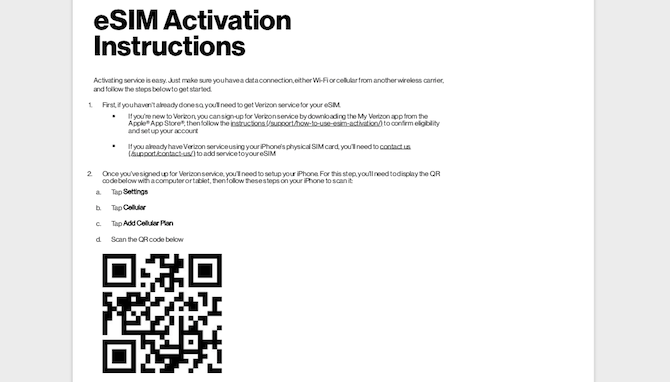
It depends what device you’ve got, and whether you bought it with a cellular plan or added your plan separately. Buy the plan separately and you’ll get an eSIM activation card that includes a QR code that you need to scan on your phone.
- On iPhone go to Settings > Cellular (or Mobile Data) > Add Cellular Plan then scan the code when prompted.
- On Android you can set up your eSIM at Settings > Network & internet > Add. Follow the onscreen instructions and choose Use 2 Numbers when prompted. This may of course differ depending on which Android version and phone you’ve got.
Buy a Pixel on Google Fi and your eSIM details will be automatically tied to your account.
Your Apple Watch will come with the eSIM preconfigured when you buy it with a plan, or you can add the details through the Apple Watch app if you don’t. On a Samsung Galaxy Watch you must complete the setup through a mobile app on your phone.
Dual SIM devices need to support DSDS (Dual SIM, Dual Standby) in order to offer full functionality. This is available on the iPhone, and in Android 10. DSDS enables both SIMs to connect to a network at the same time. When you set it up, you’ll need to choose which line to use as your default line.
What Are the Benefits of eSIM?
The main benefit to the eSIM is that it’s really small. Nano SIMs already seem pretty small, but with a surface area of 108.24mm² (4.2 inches) they’re actually more than three times larger than an eSIM, which measures just 30mm² (1.18 inches).
That’s before we even factor in the additional size of the SIM tray, and the card reader inside the device. These are no longer needed with the embedded technology.
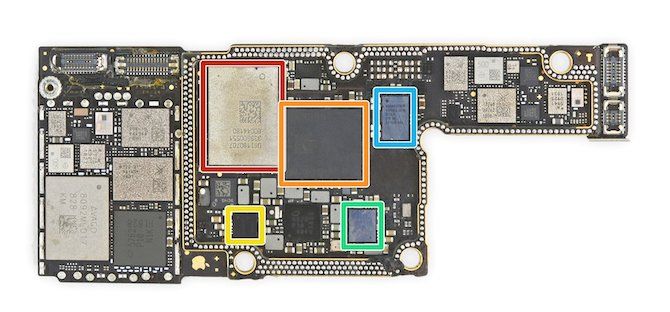
This not only allows extra room for other components, or perhaps a larger battery, it also enables manufacturers to rejig the internal layout of their devices. An eSIM doesn’t need to be near the edge of the phone and could make waterproofing devices even easier.
There are also benefits for us users. No fiddly cards to work with, and no need to find a paperclip if you ever need to extract the SIM tray.
As we’ve seen, eSIMs enable devices to easily offer dual SIM capabilities. This is ideal if you want to keep separate personal and work numbers, or if you’re travelling overseas.
Dual SIM phones make it much easier to hop onto a local network and avoid the expensive roaming fees you’d expect to pay on your usual plan.
What Are the Downsides?
The main downside to an eSIM is that it’s less convenient when you’re switching phones. You can’t simply remove the SIM card from one device and pop it into another.
It also makes it more difficult to test for problems with your device. At the moment, when you have connection or signal problems an easy test is to stick your SIM into a different phone to check if the problem is with your network or your device. You wouldn’t be able to do that with an eSIM.
And then there’s the fact that new technologies take a while to become mainstream. In 2019 the support and availability is still very limited.
What Devices Use eSIM?
The iPhone 11 series, plus the older iPhone XS and XR devices use an eSIM alongside a nano SIM. Pixel phones since the Pixel 2 have the same setup, although is not supported everywhere—it’s best if you use Google Fi.
Other than that there are a limited number of phones with eSIM support. Even a company like Samsung, usually so eager to embrace new technologies, is yet to offer one.
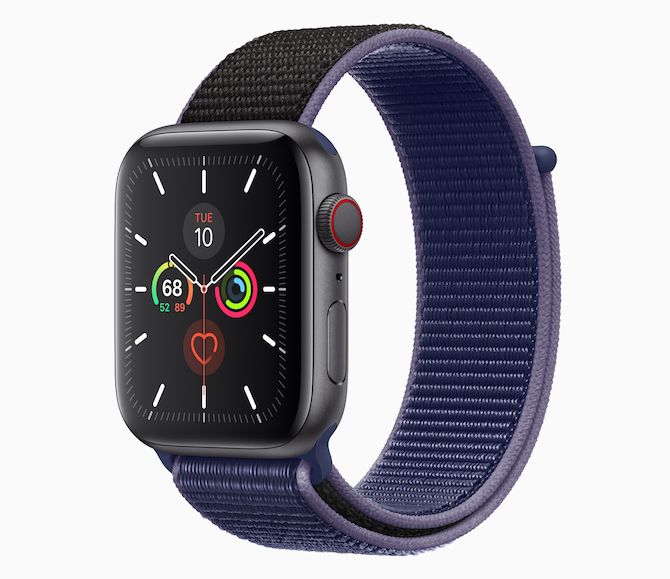
As for other devices, the cellular versions of the Apple Watch, Samsung Watch, and Huawei Watch 2 are among those that use eSIM. There’s eSIM support in Windows 10 as well, so always-connected laptops may well become a more common sight in future.
Do More With Your SIM Card
The eSIM is very much the future for smartphones and smart devices. Even if you don’t have it now, it’s likely that your next phone—or certainly the one after—will make use of it.
In the meantime, why not make sure you’re getting the most from the SIM you have got. First, learn how to beef up your phone’s security by setting up a SIM card lock
How to Encrypt and Set a SIM Card Lock on Any Mobile Device
How to Encrypt and Set a SIM Card Lock on Any Mobile Device
Do you encrypt the data on your smartphone? If not, you risk having your data stolen the moment you lose your device. Encrypting your data is easy; all you need is the right software.
Read More
. Then take a look at our guide to the best apps to manage your SIM card
7 Useful Apps to Manage Your SIM Card on Android
7 Useful Apps to Manage Your SIM Card on Android
You probably don’t think much about the SIM card on your Android phone. These apps let you manage your SIM and do more with it.
Read More
on Android.
Explore more about: eSIM, Google Pixel, iPhone, Sim Card, Smartphone Tips.
